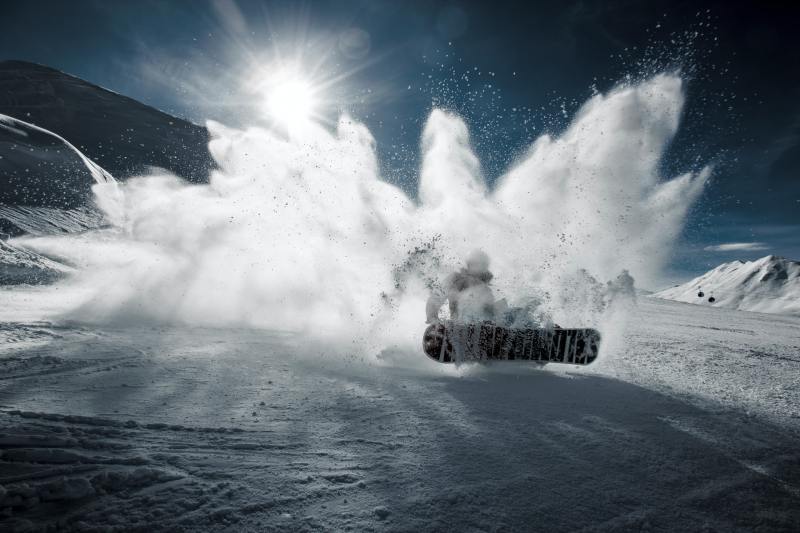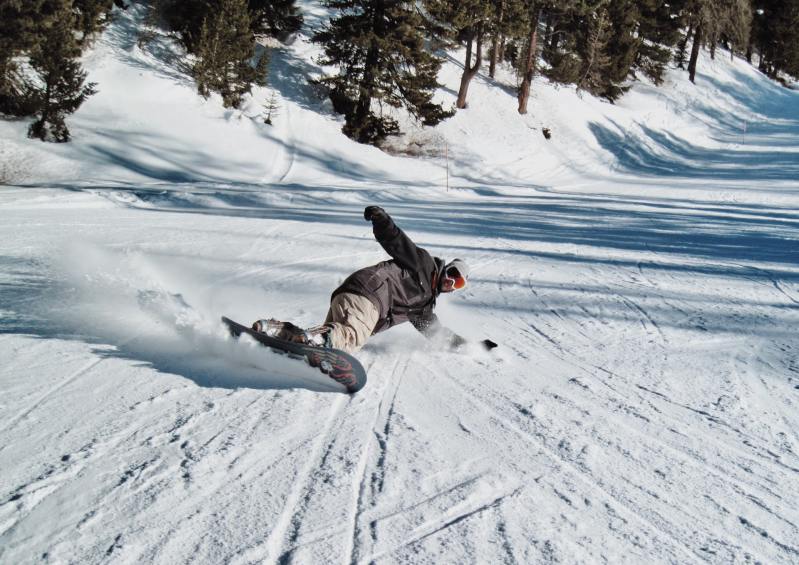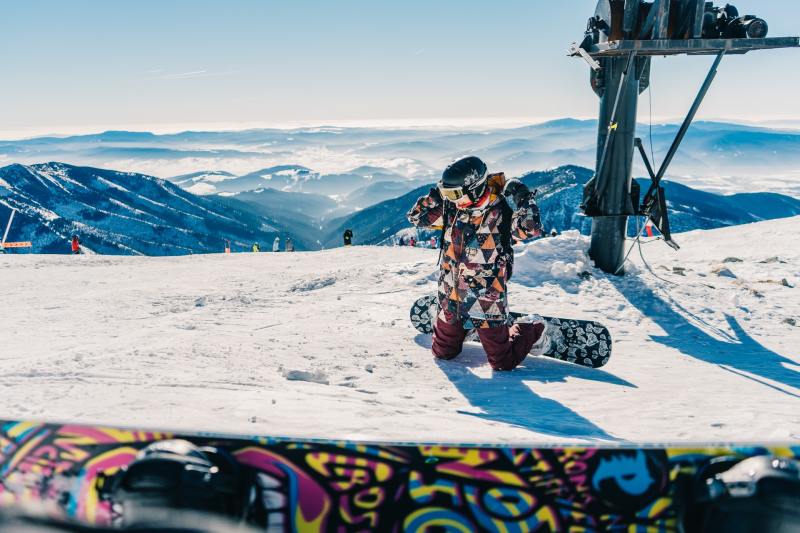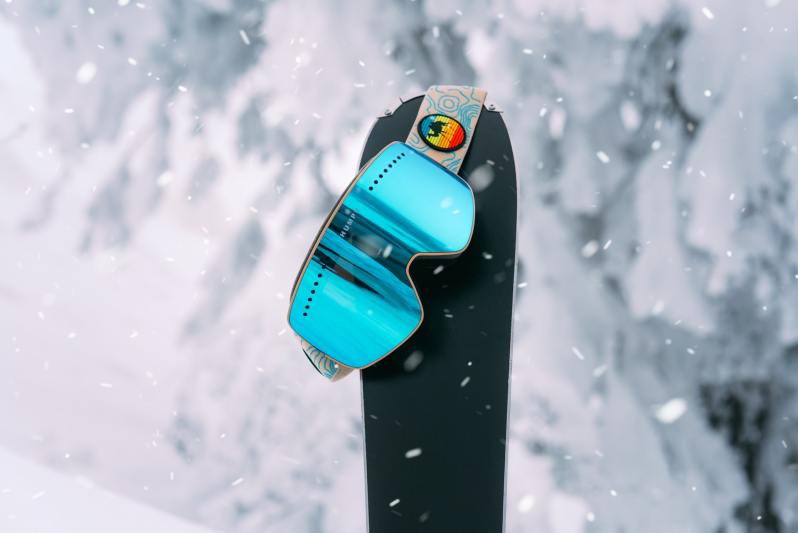It’s hard to believe we’re coming up on two years of the pandemic. Many of us got outside last winter through some of the more entry-level winter activities. Snowshoeing and cross-country skiing are both excellent in that they don’t require a ton of gear or technical know-how. If you’re looking to take it to the next level this year, consider snowboarding or downhill skiing. Sure, you can stay inside, bake sourdough, and binge Netflix. But that won’t get you through the entire winter.
What you need is some time outdoors in the fresh air. With warm weather still months away, we suggest you embrace snowsports season. Despite a slow start to the 2021 season, the snow is falling now, and the mountains are calling. If you’re looking to take up skiing, we’ve got you covered with our favorite tips for first-time skiers. But, if snowboarding seems more like your thing, read on.

Prepping for the Slopes
Have the Right Gear
Like most adventure sports, snowboarding requires some essential gear to get started. If it’s your first time, don’t stress about splashing out on the best snowboarding brands. But you don’t want to completely cheap out either. There are plenty of solid midrange products with a great bang-for-your-buck ratio. The most important thing is to find the gear that fits you properly and matches your skill level. Ideally, it’s best to get fitted by a professional, even if you intend to buy online ultimately. At the very least, you’ll want:
- Snowboard
- Snowboarding boots
- Bindings
- Ski goggles
- Ski helmet (optional, but a little extra protection is never a bad idea)
- Ski backpack (again optional, but great for carrying additional layers, a hydration pack, sunscreen, and other essentials)
On your first few runs, you might forget an accessory or two. Just know that most resort rental shops stock just about anything you might need. So, if you do forget something, you can usually snag a loaner at the mountain.
Dress to Stay Warm
The right snowboarding gear can minimize injuries, help you perfect your technique, and possibly mean the difference between having fun or not. Likewise, dressing the part ensures you’ll stay warm and comfortable all day on the slopes. No matter how amazing your snowboarding gear is, being cold and wet is a surefire formula for mountainside misery. Thankfully, that’s easy to avoid by remembering two simple adages: “Cotton kills” and “dress in layers.”
Anyone who’s spent time outdoors hiking or camping (especially in the winter) knows never to wear cotton. On a bad day, wet cotton (whether due to sweat or melting snow) can sap your body heat and make you miserable. On a really bad day, cotton can literally kill. It’s a terrible insulator when wet and takes forever to dry. So, leave the cotton at home and stock up on synthetic apparel or, even better, clothing made from Merino wool. The latter is lightweight, stays warm when wet, dries quickly, and is extremely odor-resistant. It tends to be more expensive than other natural fabrics, but it’s worth the money. At a minimum, invest in a good Merino wool base layer, a warm mid-layer (like a Merino wool sweater), and Merino wool socks.
Just as important as leaving cotton at home is to always dress in layers. This allows you to add more clothing if the temperature drops but shed a layer or two if you’re overheating on the slopes. A lightweight base layer that’s fitted (though not necessarily skin-tight) provides insulation and draws moisture away from your skin. Add a warm mid-layer made of midweight Merino wool or something comparable. A second mid-layer is wise if you tend to run on the colder side. Together, these layers will ensure you stay warm and will draw sweat away from your skin as you perspire throughout the day.
Finally, add an outer layer that’s warm, windproof, and at least water-resistant (although waterproof is best). The best ski and snowboarding jackets combine thick layers of insulation with a waterproof shell made of Gore-Tex or a comparable fabric on the outside. This simultaneously keeps you toasty in all but the most extreme temperatures while helping to shed snow and ice. Always remember to pack a change of clean, dry clothes for the ride home, too. It’s never any fun sitting in a puddle of melted snow for a multi-hour car ride back from the mountains.
Know Your Limits
Be honest about your personal fitness level and snowboarding prowess before you start. Biting off more than you can chew your first time on the mountain is a recipe for injury. Research your local resorts to make sure whichever one you’re headed to caters to novices. Most mountains offer at least a handful of green (bunny) slopes for beginners, but it’s worth confirming before you arrive.
Score Your Lift Passes Online
Pro tip: Only suckers buy their lift passes in person the day of. Most resorts sell online passes in advance that allows you to skip the line once you arrive at the mountain. Plus, they’re almost always cheaper. Often, the further in advance, you buy, the more you save. Likewise, the more ski days you buy, the more reasonable the per-day cost. If you know you’re likely to ski or snowboard the same mountain often, consider getting a season pass.

Carving Your First Trail
Protect Yourself (and Your Smartphone)
It’s easy to remember the obvious bits like gloves and a beanie. But, don’t forget that spending hours in a blinding white environment can damage eyeballs and exposed skin. Make sure your ski goggles offer UV protection (most do) and pack a bit of sunscreen for covering your face and any exposed skin to protect against sun damage. Dry, cold air can also dehydrate you much faster than you expect. An insulated water bottle or hydration pack ensures you stay well hydrated throughout the day. Don’t forget your precious smartphone, too. Cold weather drains batteries, so consider stashing your phone in an inside pocket where your body heat will keep it toasty and well insulated in the event of a wipeout.
Catching Your First Lift
Catching your first chair lift ride might seem as intimidating as actually snowboarding. The chairs seem to move so fast, dozens of strangers are watching you, and you’re hobbling forward one hop at a time with a board strapped to your foot (a.k.a. “skating”). Don’t stress. Slow down and take your time. Don’t be too proud to flag the attendant and let them know it’s your first time. They can slow or stop the lift altogether to ensure you get on safely.
Go With a Pro
It’s amazing how quickly little kids learn a new skill. A big part of that is due to their fearlessness because they’re too naive to know better. But, it’s also because of a lack of pride. Adults have a much harder time admitting that they don’t know something. Yes, you can learn to snowboard by yourself. But, trust me (someone who broke his tailbone trying to learn to snowboard on his own), it’s much, much easier to take a lesson or two. A good professional will go at your pace and be able to objectively know what you’re doing wrong and how you can improve. You’ll learn more in a one-hour lesson with a snowboarding professional than you will in a week of trying to teach yourself. One thing we don’t recommend is trying to learn from a close family member or significant other. In most cases, this is a recipe for disaster (see also: Tandem kayaking).

Take a Stand
First-time snowboarders — even those who’ve skied before — are surprised to learn just how challenging it can be to simply stand up. Start from a seated position with both feet strapped into your board. Bend your knees, and pull the snowboard backward toward you. Then lean forward and stand, relying on your core and quads. On your first day on the mountain, you’ll be spending a lot of time on your butt, so this is a skill worth mastering before anything else.
Just … Stop
Douglas Adams once said, “It’s not the fall that kills you; it’s the sudden stop at the end.” Learning to stop on your own terms (before, say, a tree, toddler, or ice patch does it for you) is even more important than going downhill. Before getting too far ahead of yourself, take the time to master slowing down and stopping. It’s all about controlling the edge of your snowboard. Start by gradually descending a slight slope with your snowboard flat on the ground. While moving, gently push your toes down to dig the toeside edge of your board into the snow. The more pressure you apply, the more you’ll slow down until you stop entirely. Try this same technique but apply pressure to your heels instead to dig the heelside of your board into the snow. Alternating between these two methods will also help you learn to balance on your board.
Learn to Turn
Once you’ve mastered standing and stopping on your snowboard, the next skill to tackle is turning. Thankfully, this is one of the easiest skills for first-time snowboarders to master. Combine the same toeside and heelside balancing techniques you learned while stopping to make long, gradual half-turns called “garlands.” From there, you can graduate to full C-turns that require moving from your heelside to your toeside and back again while navigating your way down the mountain. Once you’ve stood up, learned to stop, and nailed a full C-turn, pat yourself on the back. You’re officially a snowboarder!
Slow Down and Swallow Your Pride
Once you master snowboarding, you’ll have all the time in the world to “shred pow” like Shaun White. But there’s no need to rush your first few runs or even the first few days. Relax and take it slow. Master the basics before attempting jumps, spins, and highway speeds down the mountain. If you’re testing your mettle on the bunny slopes, you’ll no doubt be surrounded by other novices. You’ll watch each other fall. You might even crash into one another. At some point, you’ll probably wipe out hard, too. Get back up, brush yourself off, and try again. Remember, you’ll never see these people again in your life.

Après Ski (or Après Board)
Call It a Day
When it comes to adventure sports, it’s a fact that 80% of injuries happen during the last 20% of the day. The last hour on the mountain is when you’re most likely to be tired and a little more careless. Know when to call it a day, especially if it’s your first time. If you’re unsure if you can squeeze in one last run, the answer is probably no. Try to wrap up the day before you feel too worn out. Your body will thank you later.
Stay Hydrated
Like most winter sports, snowboarding will dehydrate you much faster than you think. You may not feel the workout or the sweat the same way you would during a game of beach volleyball. But it’s still critical to keep up your fluids. Once you’ve wrapped up the day, drink plenty of water and consider supplementing with electrolytes to replenish your body’s nutrients. Then you can head out for a proper après ski celebration.
Snowboarding, even for beginners, usually involves transporting a ton of gear from home to the mountain and back again. The best way to keep your vehicle and your fellow snow buddies clean, dry, and happy is to secure all that gear to the outside of your car with a roof rack made for skis and snowboards.



